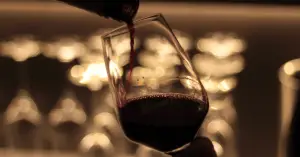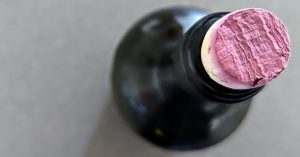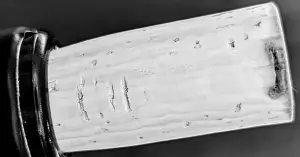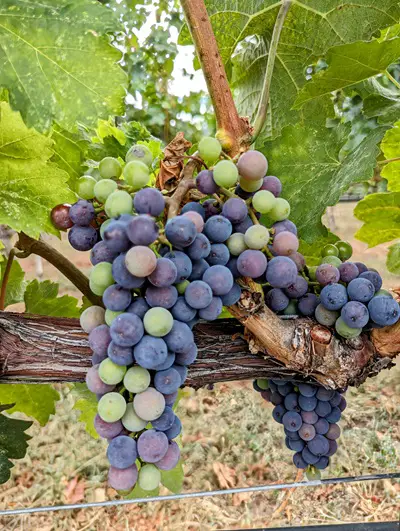
Mid-summer in the northern hemisphere signals a turning point in the grapevine’s lifecycle. The vine shifts from putting energy into growing shoots and leaves for photosynthesis, to concentrating energy into ripening the berries through veraison.
The transition from hard green berries to ripe grapes is called veraison (in American English pronounced ver-eh-shun), and marks a physiological color change in the grapes. In red varieties, green grapes turn purple, and they turn from green to yellow-green for white grape varieties. This is an important stage in berry development as the process involves berry softening and rapid sugar accumulation.
What Happens Before Veraison?
Leading up to veraison, wine grapes are green, hard, and small. The berries aren’t growing in diameter or weight. All of the energy is going into maturing the seed embryos inside the berry.
At this stage, the berries have anti-feeder properties to prevent birds from snacking on them. The seeds aren’t fully mature or ready for critters to eat and spread across the land. The berries are bitter, acidic, and tannic – like a jilted lover.
Pre-veraison, tannins in the berry seeds continue to accumulate. They’re incredibly bitter. Post-veraison, the tannins begin to mature and soften, in a process called polymerization.
Veraison also marks the beginning of anthocyanin, or color, development. This makes sense as the berries turn color.
Pre-veraison Vineyard Decisions
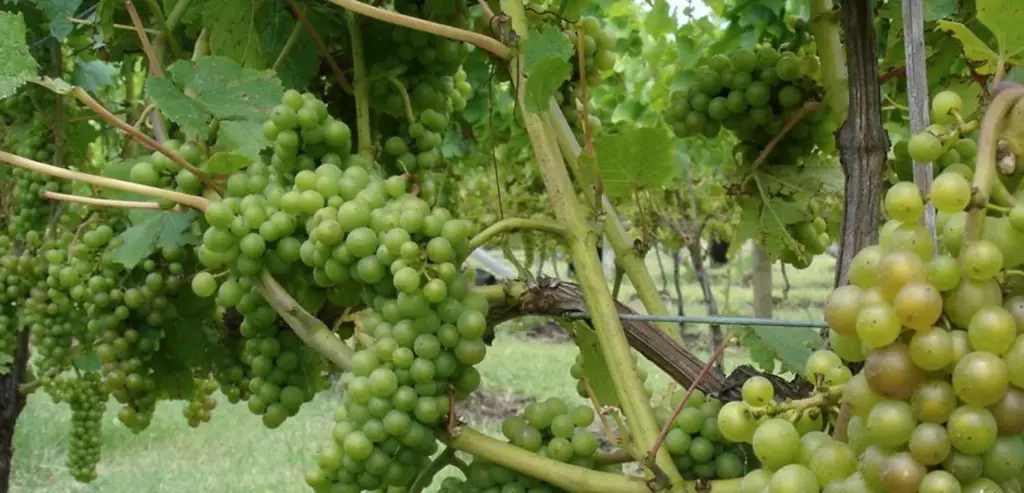
Green grapes going through veraison.
While the grapes don’t look like they’re doing much before veraison, they’re still undergoing important changes that will affect the final wine profile.
Before veraison, clusters that get too much shade from the vine’s canopy, or other leaves, can lead to an increase in the green aromas and flavors in the wine, called methoxypyrazines.
This can come across as strong green bell pepper, grass, and asparagus notes.
Methoxypyrazines are famous in wines from the Sauvignon family: Cabernet Sauvignon, Sauvignon Blanc, Cabernet Franc, and Petit Verdot, for example.
What Else Is Going on in the Vineyard During Veraison?
Veraison is a good opportunity for viticulturists to test for nitrogen, a key macronutrient for plant growth. Insufficient nitrogen can lead to problems with fermentation in the winery.
Vineyard managers collect samples of leaf stems, called petioles, and send them in for lab analysis. If the samples come back deficient in nitrogen, the vineyard manager can apply fertilizer prior to harvest.
What Happens Post-veraison?

Grapes begin accumulating sugar at a rapid rate. After veraison, the berry goes through accelerated ripening, a decrease in acidity, and maturing of the tannins. The seeds turn from bright green to soft browns.
Harvest isn’t too far off!
Different grape varieties go through veraison at different times and the change doesn’t happen all at once, even within the same vineyard.
The berries turn color over a period of several weeks. This process may be delayed by cool, cloudy weather during the growing season. But once all of the berries have changed color, it’s generally only 6 more short weeks until harvest.
Time to get the winery ready!
Thirsty for More?
Check out this post that does a deep dive into how they decide to plant what kinds of grapes where.
And here’s a post that goes into the epic history of phylloxera.

